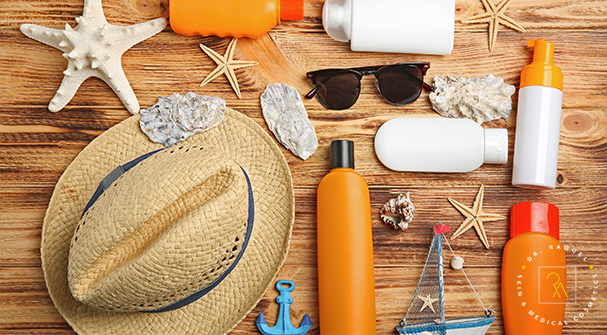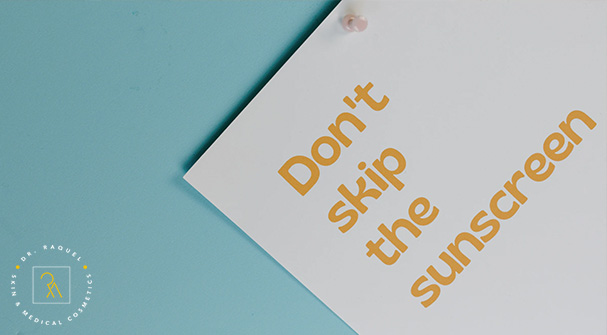Sun Protection 101: Essential Tips for Summer Skincare
As summer approaches, many of us are eager to soak up the sun. However, it’s essential to protect our skin from harmful UV radiation. Sunscreen is a crucial part of any summer skincare routine, but understanding how to use it effectively can be confusing. This comprehensive guide covers everything you need to know about sunscreen, including tips from the latest research and expert advice.
Understanding UV Radiation
1. Types of UV Radiation:
- UVA: Long-wave UV radiation that penetrates deep into the skin, leading to premature ageing and long-term skin damage.
- UVB: Short-wave UV radiation that affects the skin’s surface, causing sunburn and playing a significant role in developing skin cancer.
2. UV Index:
- The UV index measures the strength of UV radiation at a particular place and time. Higher values indicate a greater risk of skin damage.

Choosing the Right Sunscreen
1. SPF (Sun Protection Factor):
- SPF indicates how long sunscreen will protect you from UVB rays. For example, SPF 30 means you can stay in the sun 30 times longer than you could without protection.
- Recommendation: Use a broad-spectrum sunscreen with at least SPF 30, but ideally 50
2. Broad-Spectrum Protection:
- Broad-spectrum sunscreens protect against both UVA and UVB rays. Always check the label to ensure comprehensive protection.
3. Types of Sunscreen:
- Physical (Mineral): Contains zinc oxide or titanium dioxide, creating a physical barrier on the skin. Ideal for sensitive skin
- Chemical: Contains organic compounds, often lighter and easier to apply but may cause irritation for sensitive skin types
4. Water-Resistant Sunscreens:
- Essential for activities involving water or heavy sweating. However, “water-resistant” does not mean waterproof; reapplication is necessary.
Proper Application of Sunscreen
1. Amount and Frequency:
- Apply at least one ounce (about a shot glass full) to cover all exposed skin. Reapply every two hours, or immediately after swimming or sweating.
2. Application Techniques:
- Apply sunscreen 15-30 minutes before sun exposure to allow it to absorb into the skin.
- Don’t forget areas like ears, back of the neck, and tops of feet.
3. Layering Products:
- Apply sunscreen first before makeup or insect repellent to ensure maximum protection.
Myths and Misconceptions About Sunscreen
1. “Sunscreen is only necessary on sunny days”:
- False. UV rays penetrate through clouds and window glass, so protection is needed even on overcast days or when you’re staying indoor all day
2. “A base tan protects against sunburn”:
- False. Any tan indicates skin damage, and a base tan offers minimal protection.
3. “Darker skin doesn’t need sunscreen”:
- False. While darker skin has more melanin and offers some natural protection, it can still suffer from UV damage and skin cancer.
4. “Higher SPF means I can stay in the sun longer”:
- Not exactly. Higher SPF provides marginally better protection but doesn’t extend safe sun exposure time significantly.

The Role of Sunscreen in Preventing Skin Cancer
Regular use of sunscreen significantly reduces the risk of developing skin cancer. It’s essential to combine sunscreen with other protective measures like wearing hats, sunglasses, and protective clothing.
Special Considerations
1. Children and Sunscreen:
- Use physical sunscreens for babies over six months. Keep infants under six months out of direct sunlight.
2. Sunscreen and Acne:
- Choose non-comedogenic (won’t clog pores) and oil-free formulas to prevent breakouts.
3. Sunscreen and Aging:
- Consistent use of sunscreen helps prevent photoaging, which includes wrinkles, fine lines, and sunspots.
Tips for Maximising Sun Protection
1. Combine Sunscreen with Shade and Clothing:
- Use hats, umbrellas, and long-sleeved clothing for additional protection, especially during peak UV hours (10 AM to 4 PM).
2. Stay Hydrated:
- Sun exposure can lead to dehydration, so drink plenty of water.
3. Regular Skin Checks:
- Perform self-examinations monthly and see a dermatologist annually for professional skin exams.
Addressing Common Concerns
1. Vitamin D:
- You don’t need to risk sun damage to get vitamin D. Consider dietary sources or supplements as an alternative.
2. Allergic Reactions:
- If you experience a reaction to sunscreen, try a hypoallergenic or mineral-based product.
3. Expiration Dates:
- Sunscreen loses its effectiveness over time. Check expiration dates and replace old products.
Final Thoughts
Preparing for the summer months with proper sun protection is crucial for maintaining healthy skin and preventing long-term damage. By understanding the importance of SPF, choosing the right type of sunscreen, and applying it correctly, you can enjoy the sun safely. Remember, sunscreen is just one part of a comprehensive sun protection strategy. Combining it with other protective measures will ensure you make the most of your summer while keeping your skin healthy and radiant.
This comprehensive guide provides essential information to help you navigate the world of sunscreens and sun protection. By following these guidelines, you can confidently prepare for the summer months and enjoy the sun safely.
Click here to book your consultation at Skin and Medical Cosmetics today. Contact us on 01732 525875 or drop us an email at hello@skinandmedicalcosmetics.co.uk.
